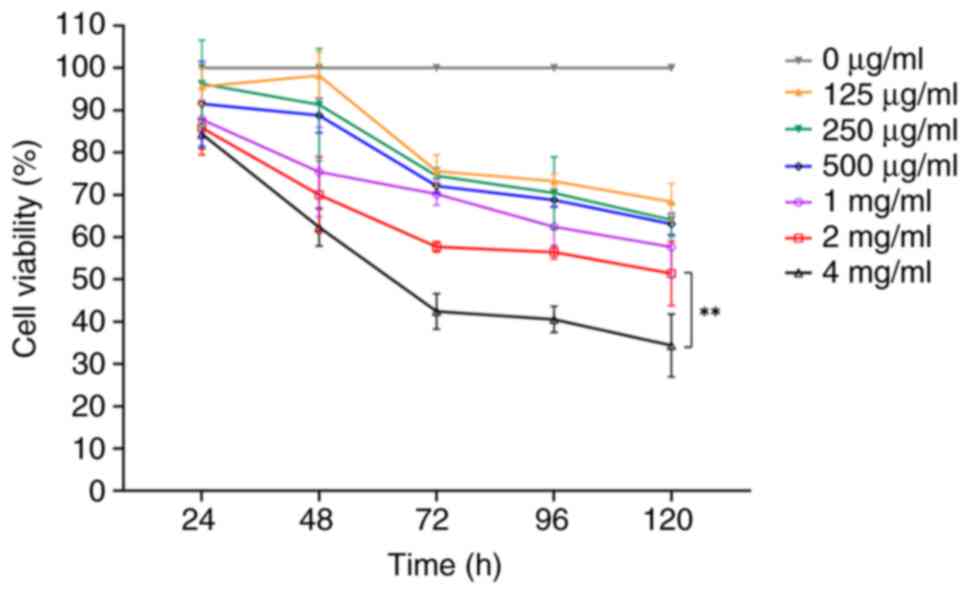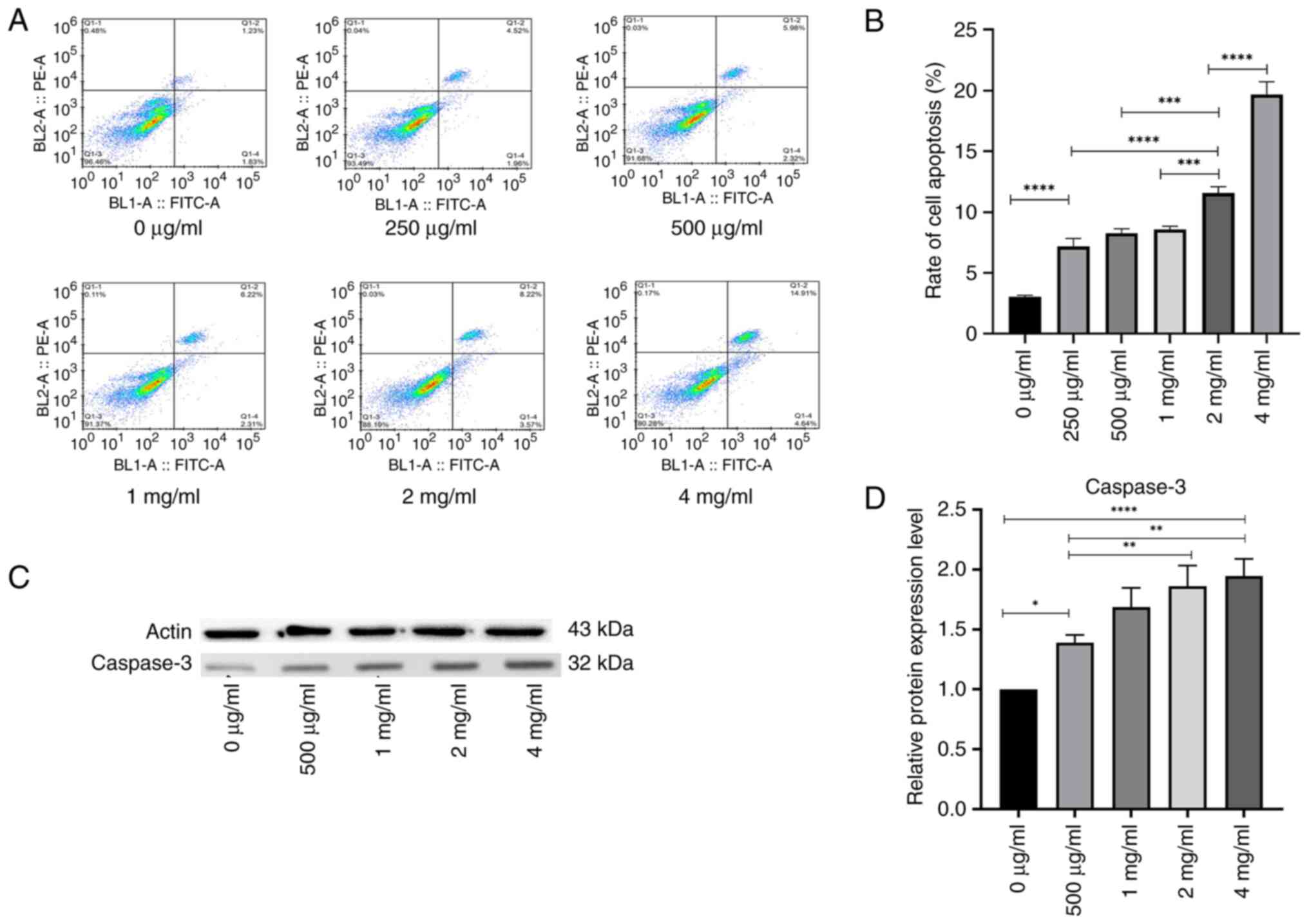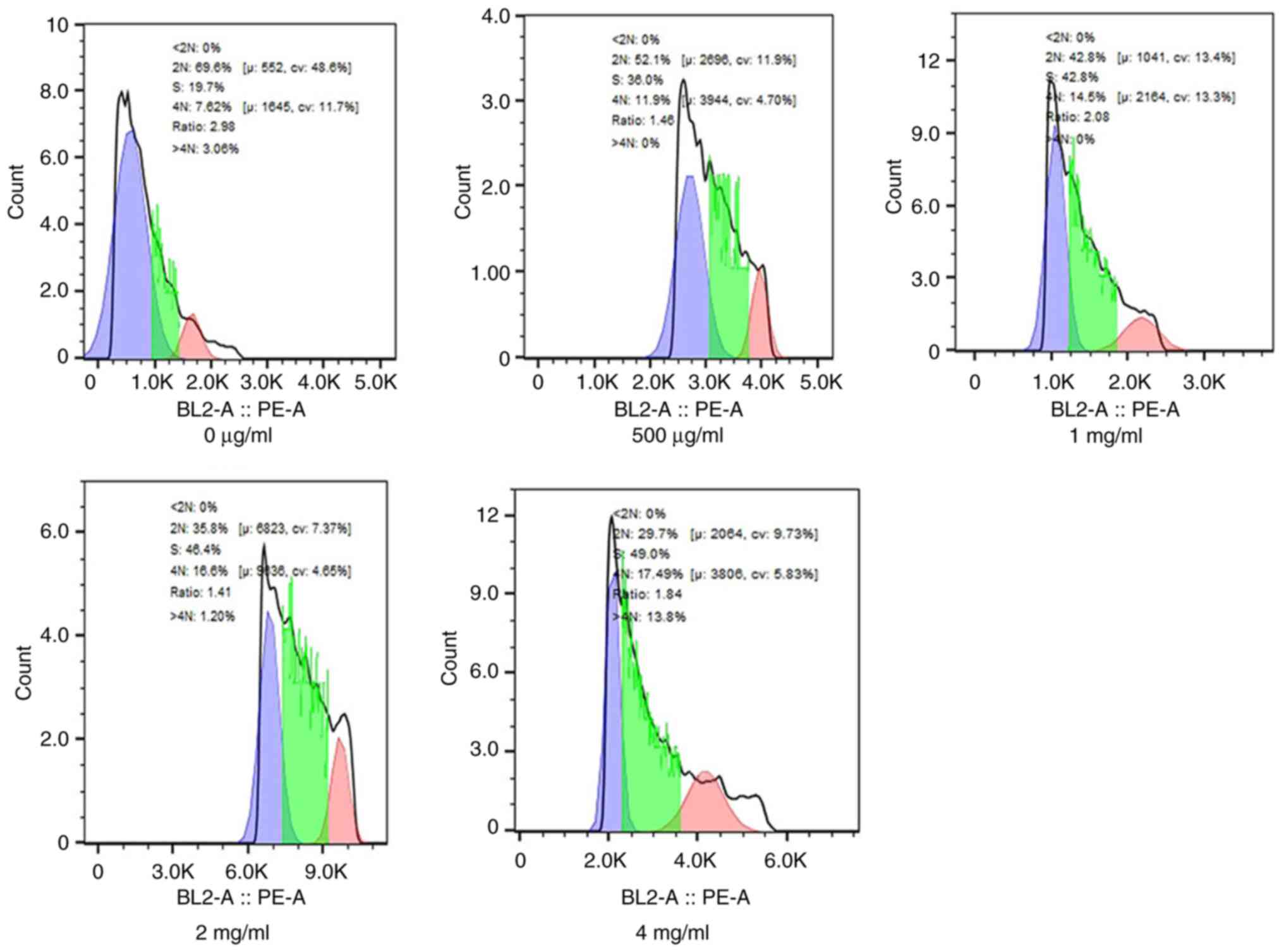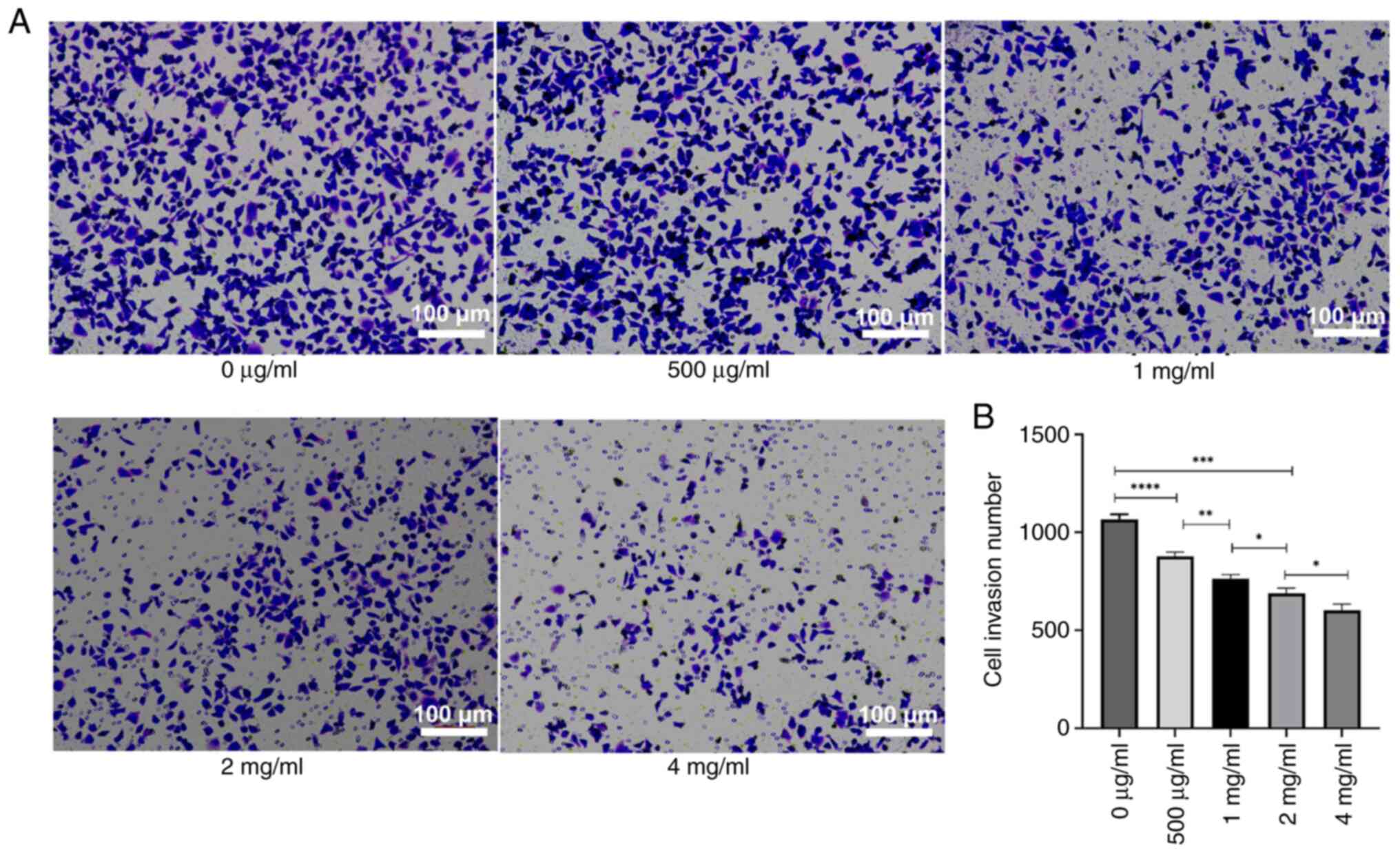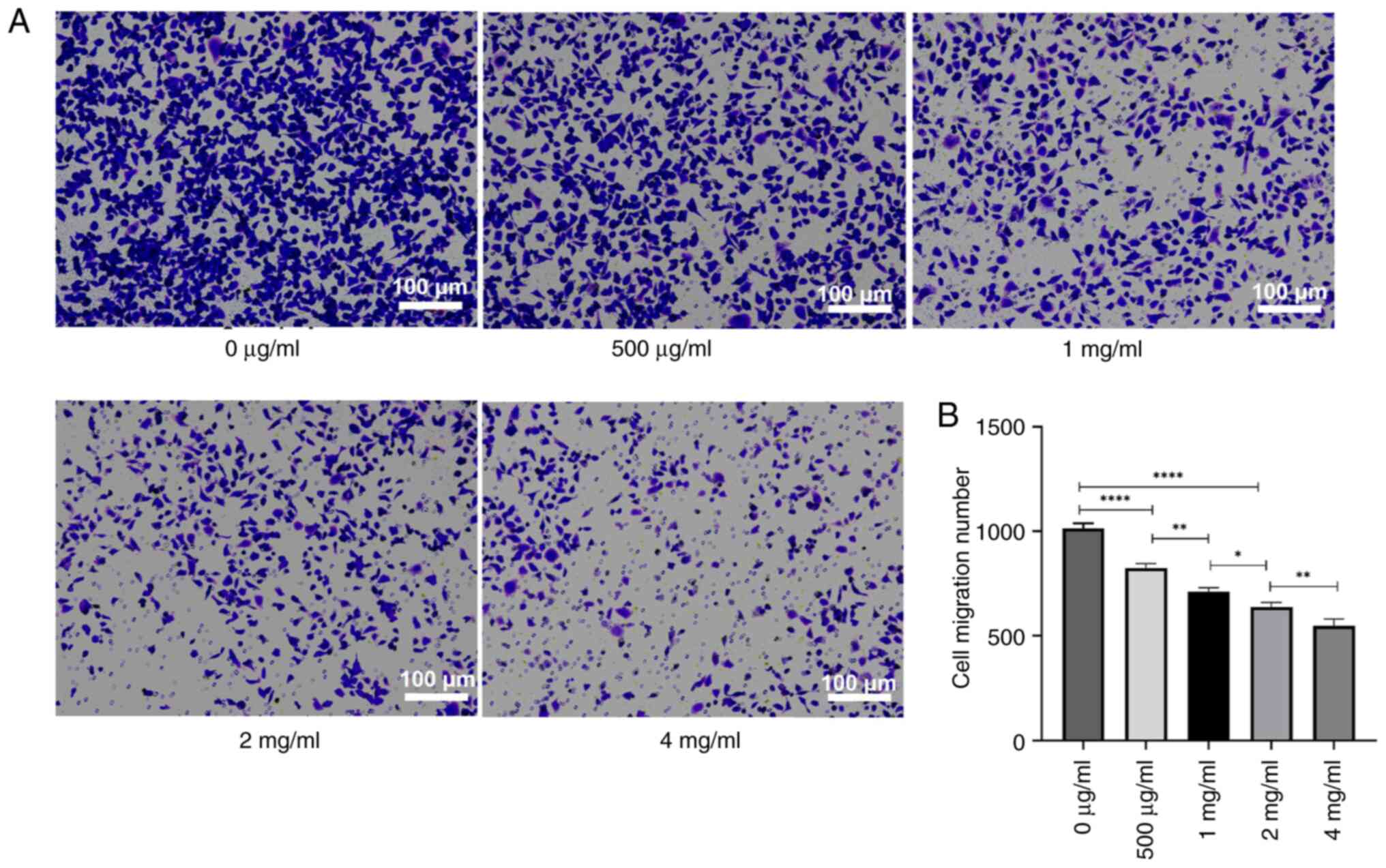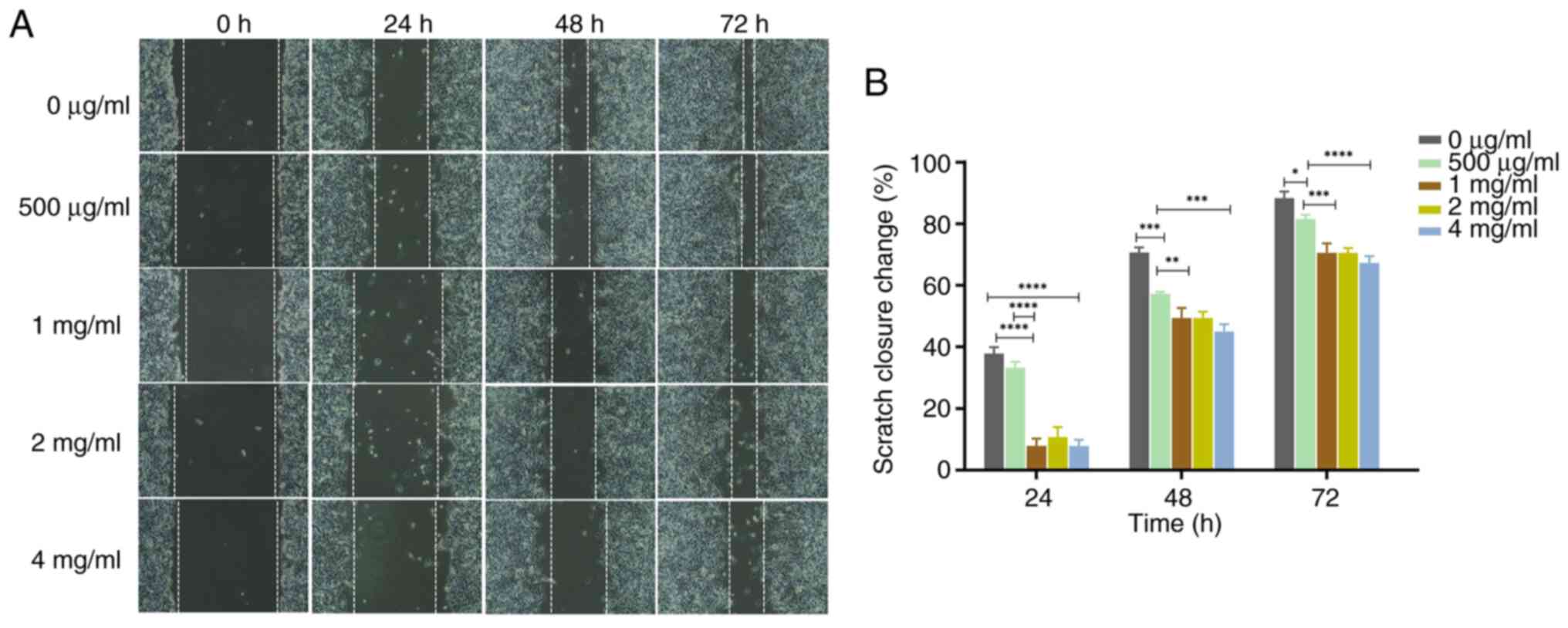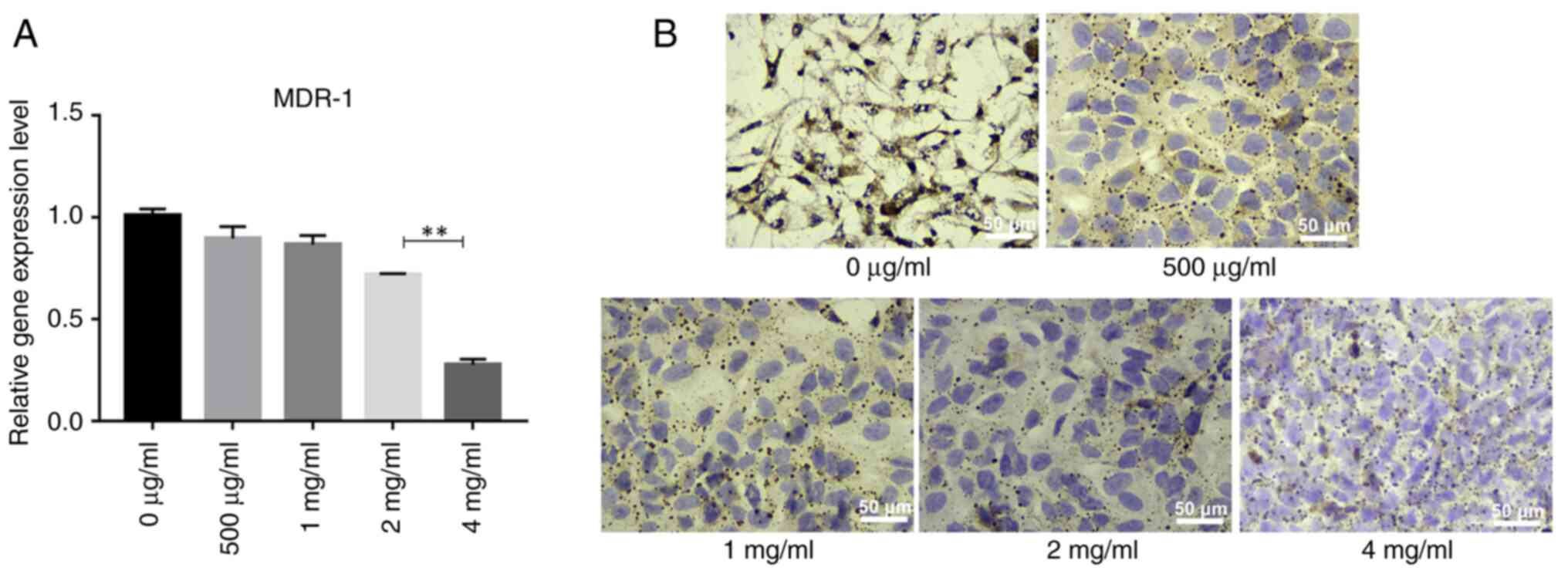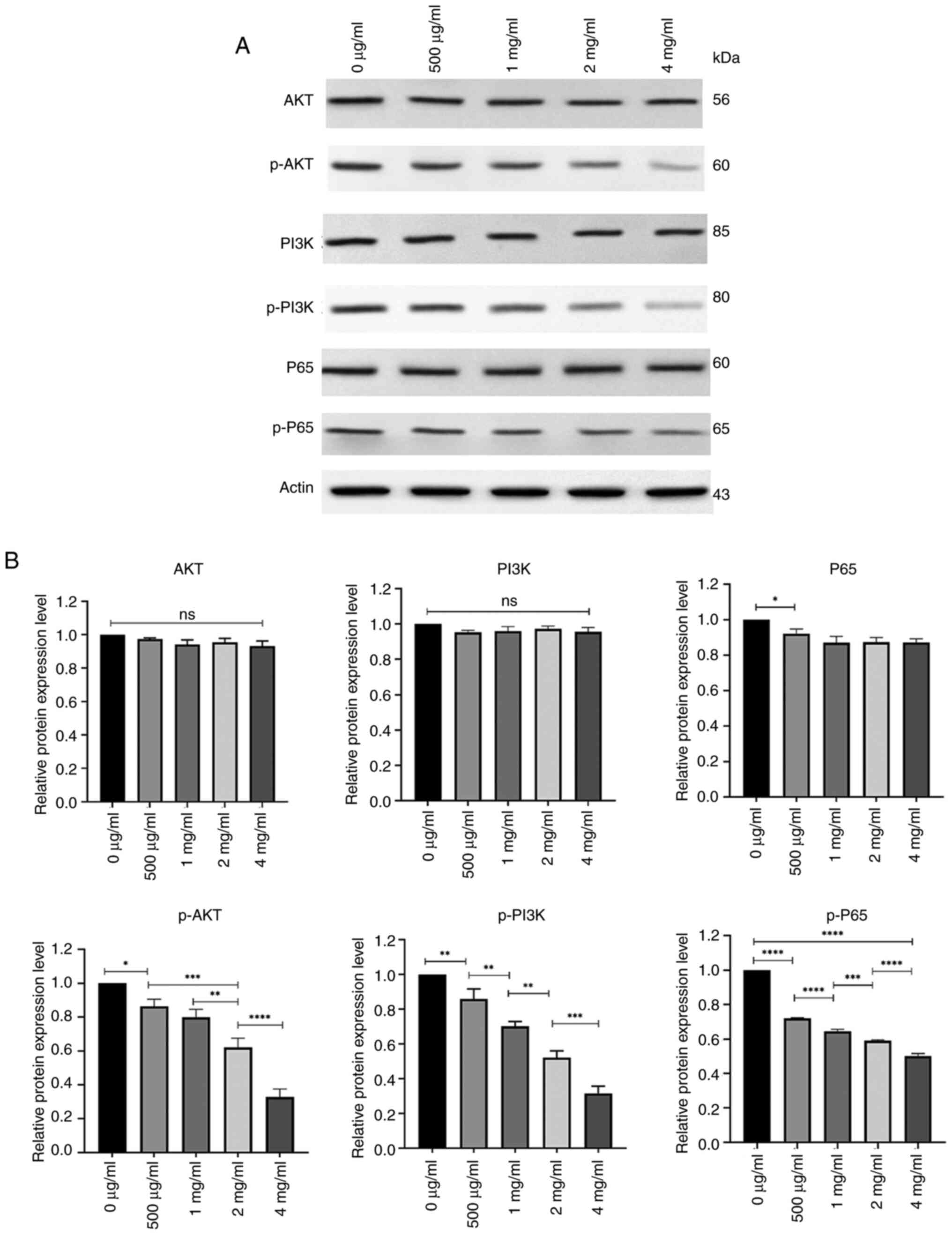|
1
|
Silk N, Reich J, Sinha R, Chawla S, Geary
K and Zhang D: The effects of resveratrol on prostate cancer
through targeting the tumor microenvironment. J Xenobiot. 11:16–32.
2021. View Article : Google Scholar : PubMed/NCBI
|
|
2
|
Penezić L, Kuliš T, Hudolin T, Zekulić T,
Saić H and Kaštelan Ž: Laparoscopic radical prostatectomy: Single
center case series. Acta Clin Croat. 61 (Suppl 3):S15–S20.
2022.PubMed/NCBI
|
|
3
|
Stoykova GE and Schlaepfer IR: Lipid
metabolism and endocrine resistance in prostate cancer, and new
opportunities for therapy. Int J Mol Sci. 20:26262019. View Article : Google Scholar : PubMed/NCBI
|
|
4
|
Cai M, Song XL, Li XA, Chen M, Guo J, Yang
DH, Chen Z and Zhao SC: Current therapy and drug resistance in
metastatic castration-resistant prostate cancer. Drug Resist Updat.
68:1009622023. View Article : Google Scholar : PubMed/NCBI
|
|
5
|
Cui X, Wang S, Cao H, Guo H, Li Y, Xu F,
Zheng M, Xi X and Han C: A Review: The bioactivities and
pharmacological applications of polygonatumsibiricum
polysaccharides. Molecules. 23:11702018. View Article : Google Scholar : PubMed/NCBI
|
|
6
|
Zhang H, Li H, Pan B, Zhang S, Su X, Sun
W, Zhang T, Zhang Z, Lv S and Cui H: Integrated 16S rRNA sequencing
and untargeted metabolomics analysis to reveal the protective
mechanisms of polygonatum sibiricum polysaccharide on type 2
diabetes mellitus model rats. Curr Drug Metab. 24:270–282. 2023.
View Article : Google Scholar : PubMed/NCBI
|
|
7
|
Wang Y, Lan C, Liao X, Chen D, Song W and
Zhang Q: Polygonatum sibiricum polysaccharide potentially
attenuates diabetic retinal injury in a diabetic rat model. J
Diabetes Investig. 10:915–924. 2019. View Article : Google Scholar : PubMed/NCBI
|
|
8
|
Yang JX, Wu S, Huang XL, Hu XQ and Zhang
Y: Hypolipidemic Activity and Anti-atherosclerotic Effect of
Polysaccharide of Polygonatum sibiricum in Rabbit Model and Related
Cellular Mechanisms. Evid Based Complement Alternat Med.
2015:3910652015. View Article : Google Scholar : PubMed/NCBI
|
|
9
|
Ye G, Zhao Y, Zhu J, Zhang Z, Wang Q,
Jiang X and Wang Z: Synergistic effect of polydatin and polygonatum
sibiricum polysaccharides in combating atherosclerosis via
suppressing TLR4-Mediated NF-κB Activation in ApoE-Deficient Mice.
Evid Based Complement Alternat Med. 2022:38851532022. View Article : Google Scholar : PubMed/NCBI
|
|
10
|
Du L, Nong MN, Zhao JM, Peng XM, Zong SH
and Zeng GF: Polygonatum sibiricum polysaccharide inhibits
osteoporosis by promoting osteoblast formation and blocking
osteoclastogenesis through Wnt/β-catenin signaling pathway. Sci
Rep. 6:322612016. View Article : Google Scholar : PubMed/NCBI
|
|
11
|
Long T, Liu Z, Shang J, Zhou X, Yu S, Tian
H and Bao Y: Polygonatum sibiricum polysaccharides play anti-cancer
effect through TLR4-MAPK/NF-kappaB signaling pathways. Int J Biol
Macromol. 111:813–821. 2018. View Article : Google Scholar : PubMed/NCBI
|
|
12
|
Xu Y, Guo Y, Lu C, Yu L, Fang C and Li C:
Polygonatum sibiricum polysaccharide inhibited liver cancer in a
simulated tumor microenvironment by eliminating TLR4/STAT3 pathway.
Biol Pharm Bull. 46:1249–1259. 2023. View Article : Google Scholar : PubMed/NCBI
|
|
13
|
Han SY, Hu MH, Qi GY, Ma CX, Wang YY, Ma
FL, Tao N and Qin ZH: Polysaccharides from Polygonatum Inhibit the
Proliferation of Prostate Cancer-Associated Fibroblasts. Asian Pac
J Cancer Prev. 17:3829–3833. 2016.PubMed/NCBI
|
|
14
|
Li M, Liu Y, Zhang H, Liu Y, Wang W, You
S, Hu X, Song M, Wu R and Wu J: Anti-cancer Potential of
Polysaccharide Extracted From Polygonatum sibiricum on HepG2 cells
via cell cycle arrest and apoptosis. Front Nutr. 9:9382902022.
View Article : Google Scholar : PubMed/NCBI
|
|
15
|
Li L, Tian LN, Ren ZX and Long ZJ:
Research progress on the structural analysis and functional
activity of polysaccharides. Chin J Exp Tradit Med Fromul.
21:231–234. 2015.(In Chinese).
|
|
16
|
Tewari D, Patni P and Bishayee A, Sah AN
and Bishayee A: Natural products targeting the PI3K-Akt-mTOR
signaling pathway in cancer: A novel therapeutic strategy. Semin
Cancer Biol. 80:1–17. 2022. View Article : Google Scholar : PubMed/NCBI
|
|
17
|
Hashemi M, Taheriazam A, Daneii P,
Hassanpour A, Kakavand A, Rezaei S, Hejazi ES, Aboutalebi M,
Gholamrezaie H, Saebfar H, et al: Targeting PI3K/Akt signaling in
prostate cancer therapy. J Cell Commun Signal. 17:423–443. 2023.
View Article : Google Scholar : PubMed/NCBI
|
|
18
|
Wang Q, Wu S, Gu Y, Liang H, He F, Wang X,
He D and Wu K: RASAL2 regulates the cell cycle and cyclin D1
expression through PI3K/AKT signalling in prostate tumorigenesis.
Cell Death Discov. 8:2752022. View Article : Google Scholar : PubMed/NCBI
|
|
19
|
Gu Y and Liang C: TRAIP suppressed
apoptosis and cell cycle to promote prostate cancer proliferation
via TRAF2-PI3K-AKT pathway activation. Int Urol Nephrol.
56:1639–1648. 2024. View Article : Google Scholar : PubMed/NCBI
|
|
20
|
Raja Singh P, Sugantha Priya E,
Balakrishnan S, Arunkumar R, Sharmila G, Rajalakshmi M and
Arunakaran J: Inhibition of cell survival and proliferation by
nimbolide in human androgen-independent prostate cancer (PC-3)
cells: Involvement of the PI3K/Akt pathway. Mol Cell Biochem.
427:69–79. 2017. View Article : Google Scholar : PubMed/NCBI
|
|
21
|
Chen H, Zhou L, Wu X, Li R, Wen J, Sha J
and Wen X: The PI3K/AKT pathway in the pathogenesis of prostate
cancer. Front Biosci (Landmark Ed). 21:1084–1091. 2016. View Article : Google Scholar : PubMed/NCBI
|
|
22
|
Livak KJ and Schmittgen TD: Analysis of
relative gene expression data using real-time quantitative PCR and
the 2(−Delta Delta C(T)) method. Methods. 25:402–408. 2001.
View Article : Google Scholar : PubMed/NCBI
|
|
23
|
Davoudi Z, Akbarzadeh A, Rahmatiyamchi M,
Movassaghpour AA, Alipour M, Nejati-Koshki K, Sadeghi Z,
Dariushnejad H and Zarghami N: Molecular Target Therapy of AKT and
NF-kB Signaling Pathways and Multidrug Resistance by Specific Cell
Penetrating Inhibitor Peptides in HL-60 Cells. Asian Pac J Cancer
Prev. 15:4353–4358. 2014. View Article : Google Scholar : PubMed/NCBI
|
|
24
|
Duan C, Yu M, Xu J, Li BY, Zhao Y and
Kankala RK: Overcoming Cancer Multi-drug Resistance (MDR): Reasons,
mechanisms, nanotherapeutic solutions, and challenges. Biomed
Pharmacother. 162:1146432023. View Article : Google Scholar : PubMed/NCBI
|
|
25
|
Liu D, Tang W, Han C and Nie S: Advances
in Polygonatum sibiricum polysaccharides: Extraction, purification,
structure, biosynthesis, and bioactivity. Front Nutr.
9:10746712022. View Article : Google Scholar : PubMed/NCBI
|
|
26
|
Ji Y, Li XY, Qi Y, Zhao J, Zhang W and Qu
P: Anlotinib exerts inhibitory effects against cisplatin-resistant
ovarian cancer in vitro and in vivo. Molecules. 27:88732022.
View Article : Google Scholar : PubMed/NCBI
|
|
27
|
Liao YD, Grobholz R, Abel U, Trojan L,
Michel MS, Angel P and Mayer D: Increase of AKT/PKB expression
correlates with gleason pattern in human prostate cancer. Int J
Cancer. 107:676–680. 2003. View Article : Google Scholar : PubMed/NCBI
|
|
28
|
Malik SN, Brattain M, Ghosh PM, Troyer DA,
Prihoda T, Bedolla R and Kreisberg JI: Immunohistochemical
demonstration of phospho-Akt in high Gleason grade prostate cancer.
Clin Cancer Res. 8:1168–1171. 2002.PubMed/NCBI
|
|
29
|
Lien EC, Dibble CC and Toker A: PI3K
signaling in cancer: Beyond AKT. CurrOpin Cell Biol. 45:62–71.
2017.
|
|
30
|
Zhu S, Jiao W, Xu Y, Hou L, Li H, Shao J,
Zhang X, Wang R and Kong D: Palmitic acid inhibits prostate cancer
cell proliferation and metastasis by suppressing the PI3K/Akt
pathway. Life Sci. 286:1200462021. View Article : Google Scholar : PubMed/NCBI
|
|
31
|
Zhang L, Shao L, Creighton CJ, Zhang Y,
Xin L, Ittmann M and Wang J: Function of phosphorylation of NF-kB
p65 ser536 in prostate cancer oncogenesis. Oncotarget. 6:6281–6294.
2015. View Article : Google Scholar : PubMed/NCBI
|
|
32
|
Erdogan S, Serttas R, Turkekul K and
Dibirdik I: The synergistic anticancer effect of salinomycin
combined with cabazitaxel in CD44+ prostate cancer cells
by downregulating wnt, NF-κB and AKT signaling. Mol Biol Rep.
49:4873–4884. 2022. View Article : Google Scholar : PubMed/NCBI
|
|
33
|
Tian Y, Lei Y, Wang Y, Lai J, Wang J and
Xia F: Mechanism of multidrug resistance to chemotherapy mediated
by P-glycoprotein (Review). Int J Oncol. 63:1192023. View Article : Google Scholar : PubMed/NCBI
|
|
34
|
Zhu YX, Jia HR, Duan QY and Wu FG:
Nanomedicines for combating multidrug resistance of cancer. Wiley
Interdiscip Rev Nanomed Nanobiotechnol. 13:e17152021. View Article : Google Scholar : PubMed/NCBI
|
|
35
|
Xu T, Guo P, He Y, Pi C, Wang Y, Feng X,
Hou Y, Jiang Q, Zhao L and Wei Y: Application of curcumin and its
derivatives in tumor multidrug resistance. Phytother Res.
34:2438–2458. 2020. View Article : Google Scholar : PubMed/NCBI
|
|
36
|
Chen T, Xiao Z, Liu X, Wang T, Wang Y, Ye
F, Su J, Yao X, Xiong L and Yang DH: Natural products for combating
multidrug resistance in cancer. Pharmacol Res. 202:1070992024.
View Article : Google Scholar : PubMed/NCBI
|



